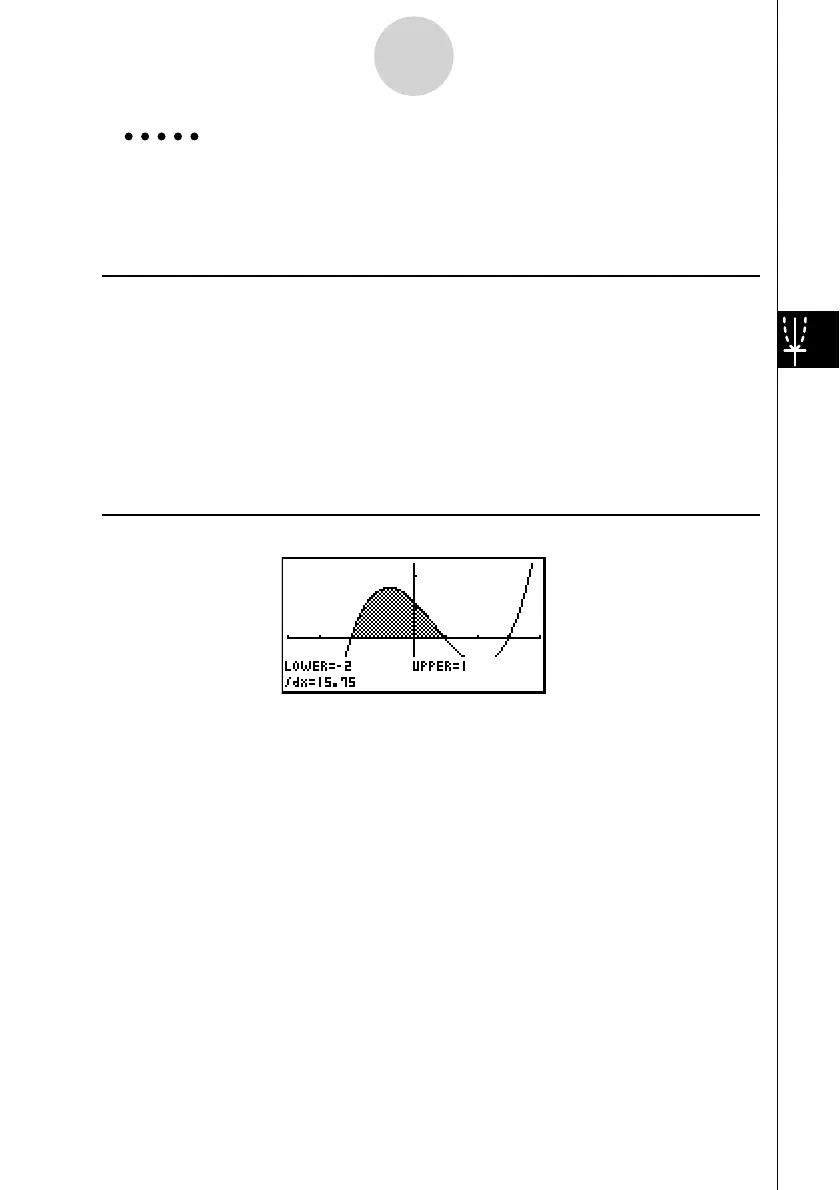20070201
5-6-4
Manual Graphing
Example Graph the integration
1
–2
( x + 2)( x – 1)( x – 3) dx.
Use the following V-Window settings.
Xmin = –4, Xmax = 4, Xscale = 1
Ymin = –8, Ymax = 12, Yscale = 5
Procedure
1 m RUN
•
MAT
2 !3(V-WIN) -ewewbwc
-iwbcwfwJ
3 !4(SKTCH)1(Cls)w
5(GRPH)5(G
• ∫ dx)
4(v+c)(v-b)(v-d),
-c,bw
Result Screen
